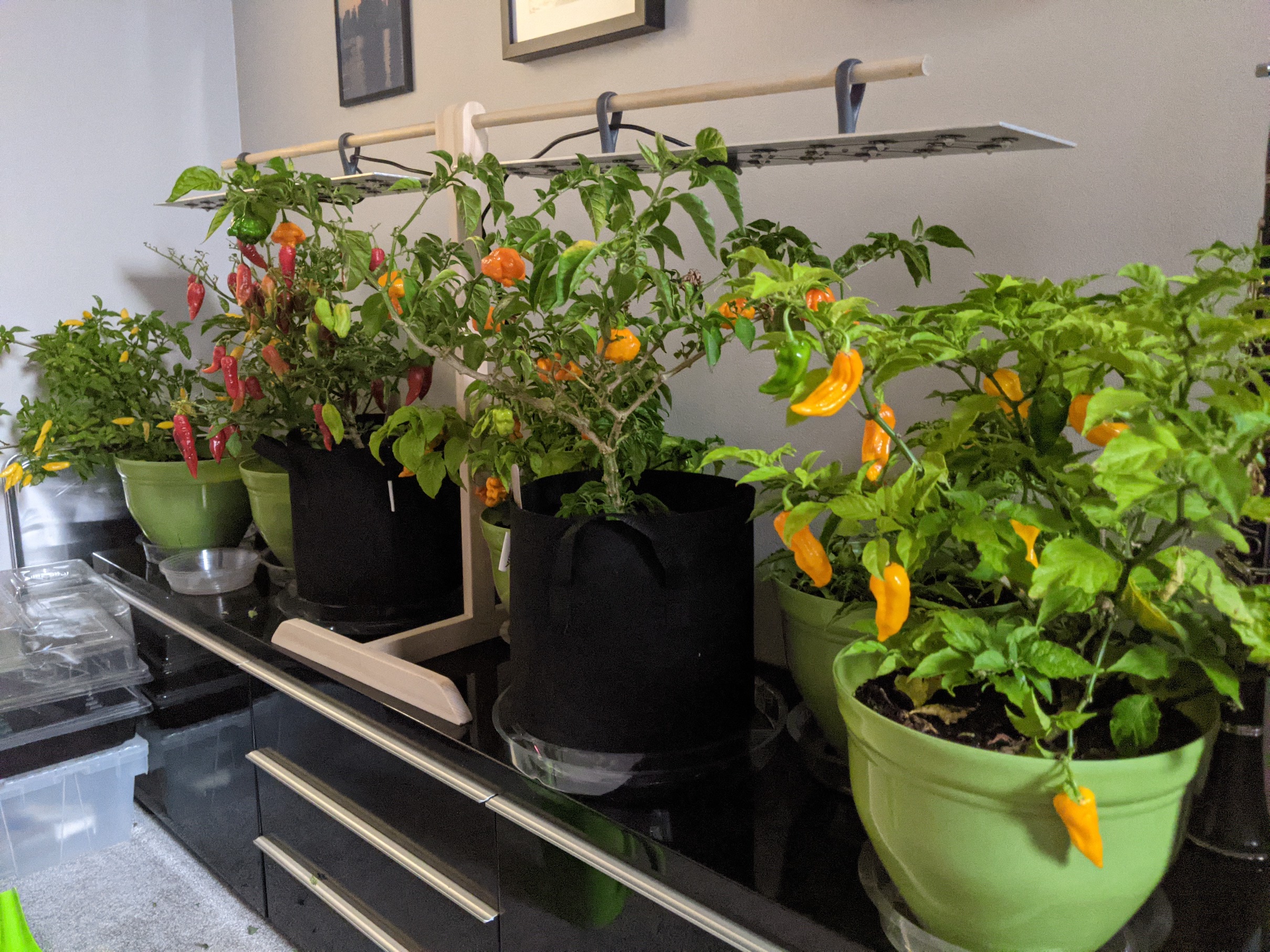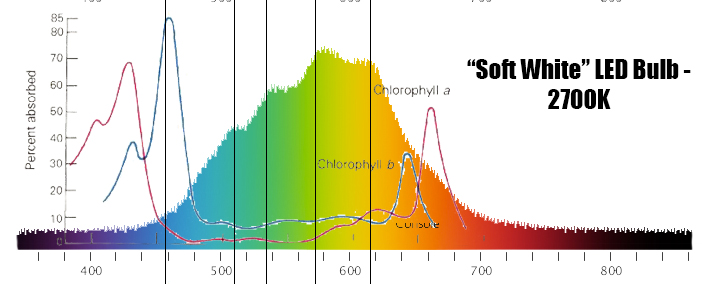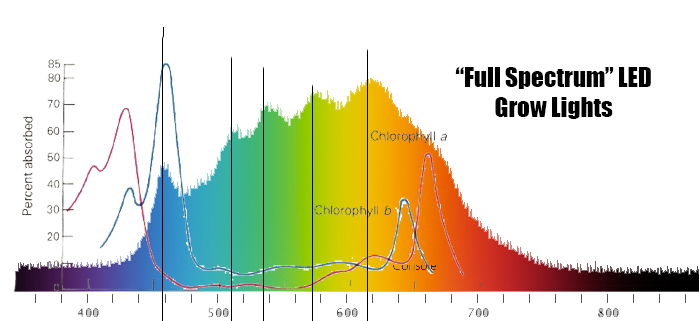
Although you wouldn't guess it from the other posts on this website, I quite enjoy gardening and taking care
of plants.
Unfortunately, the engineering lifestyle means living in big cities in small apartments. Without a yard and
room for an
actual garden or raised beds, I am limited to potted plants under grow lights.
In the past, I have attempted to grow basil and lettuce under various light sources including LED bulbs, CFL
bulbs, and
even a 200 W diffuse TV backlight. Unfortunately these light sources do not produce good results. The spectral
content
is tuned to be pleasant for human eyes, but they simply don't contain the wavelengths of light that plants
really need.
Even 200 watts of regular white LEDs barely kept my basil and lettuce alive, it certainly didn't allow them to
thrive.
You can buy LED grow lights for plants of course. But they are somewhat enigmatic. When this project started,
all I knew
was that they worked much better than lighting LEDs, and that they cost almost 5 times the equivalent power of
regular
white LEDs.
My sneaking suspicion was that the marketing term of "grow light" magically bumps up the price, although the
parts cost is
likely very similar.
This prompted the design and construction of my custom optical spectrometer, a tool to measure the spectral
composition of
light sources. You can see that project here.
Using the spectrometer I was able to measure various light sources including commercial grow lights and
various individual LEDs.
Most white LEDs are actually very similar, using a base diode that produces light at about 450 to 460 nm
wavelength. The color
temperature of the LED is then tuned to be either warmer or colder by including varying mixtures of phosphors
that absorb some
450 nm and re-emit in the green, yellow and red wavelengths. The wavelength and phosphor spectral peaks can be
seen below
in the spectrogram of a typical LED lightbulb.
Also overlaid is the absorption spectrum of chlorophyll A and B found on the internet.

It's clear that the match between the lightbulb and the chlorophyll is not great. A spectrogram of a "Full
spectrum" white
grow light can be seen below. You can see that a strong base 450 nm peak is present, but also clearly many
more phosphors have
been included to produce a much more broad and diverse range between 450 and 650 nm. Curiously, the match with
chlorophyll
is still not that great.

A naive approach may be to think that a spectrum that perfectly matches the chlorophyll absorption spectrum
would be ideal.
However, although there is not much good scientific literature on the subject, it is generally agreed that
plants really do
need all wavelengths, even including some greens and reds for the stimulation of certain chemical reactions.
The general
consensus is that most of the energy should be contained in wavelengths around 400 to 450 nm as well as around
650 nm
(note that this does actually match the chlorophyll absorption). But there should also be 15-25 % of the
energy distributed
between 450 and 650 nm as well as some long wavelengths above 650 and 700 nm. This distribution seems to
change depending upon
the plant as well as what stage of growth you're trying to promote (growth, flowering, fruiting, etc.)
Because there are actually not too many base LED colors available, it was a fairly easy task to buy a range of
LEDs from 405 nm
to 720 nm and assemble them in the right ratio to achieve a spectrum taylored nearly perfectly to plants.
I ended up choosing 405 nm, 450 nm, regular phosphered white, and 680 nm LEDs in a ratio of 1:3:2:3. This
produced a spectrum
that overlaps with chlorophyll well, but also contains some greens and yellows as well as deep red out to
about 750 nm. The final
spectrum can be seen below.

The LEDs I purchased were fairly inexpensive 2W gull wing LEDs on aluminum core PCBs. I ran thermal
simulations to estimate that
I could fit 28 of these on a smooth flat 6 by 24 inch aluminum plate. This gave good thermal dissipation,
keeping the LEDs below
about 70C, while drawing about 60 watts at 48V.

But how well do they actually work? I made two of these LED arrays for a total of 120 watts. I compared them
to 140 watts of off
the shelf grow light covering 4 square feet. I positioned my custom grow lights to cover approximately the
same area for a lower power
density of 30 watts per square foot (I love mixing unit systems, don't you?). I planted a variety of spicy
peppers under each.
Of course my experiences and tests are far from rigorous, but I can anecdotally say that the plants under the
custom grow lights
grew faster, were much darker green, and had a much much lower mean node length than the peppers under the off
the shelf lights.
All with 15% less power.
For peppers, however, the proof will really be in the quality of the fruit produced. For that, we'll have to
wait and see.
